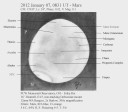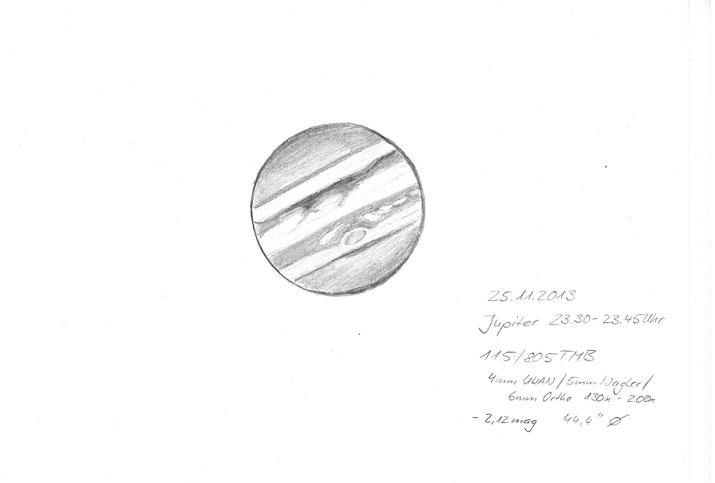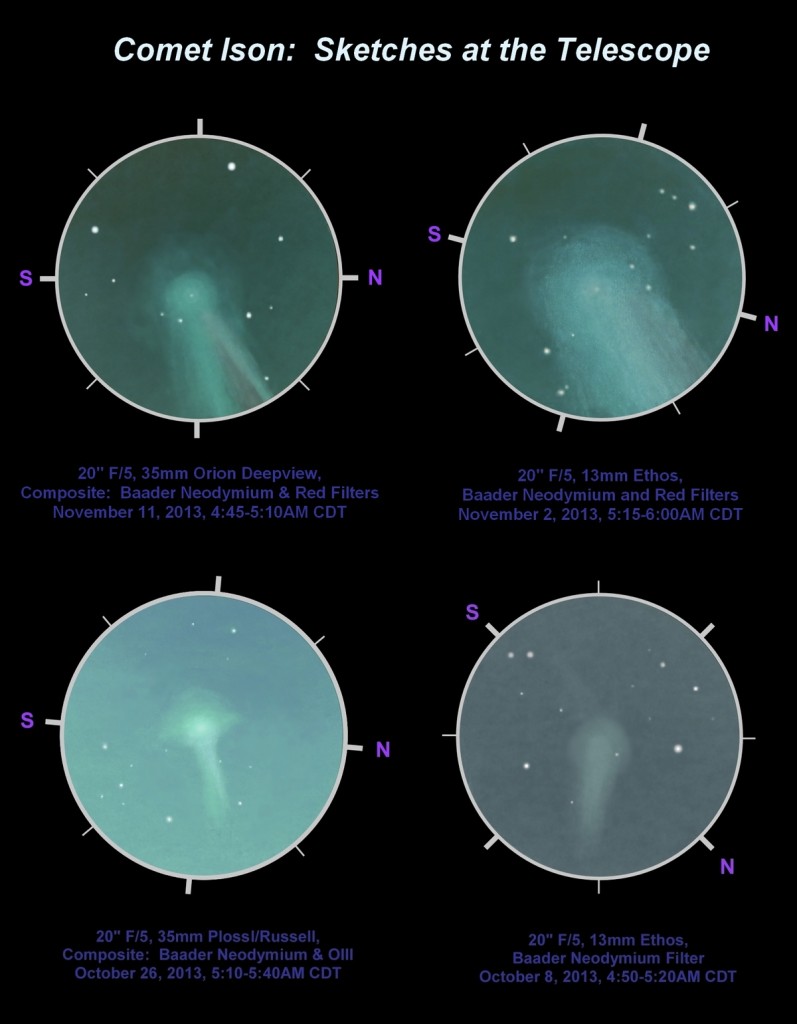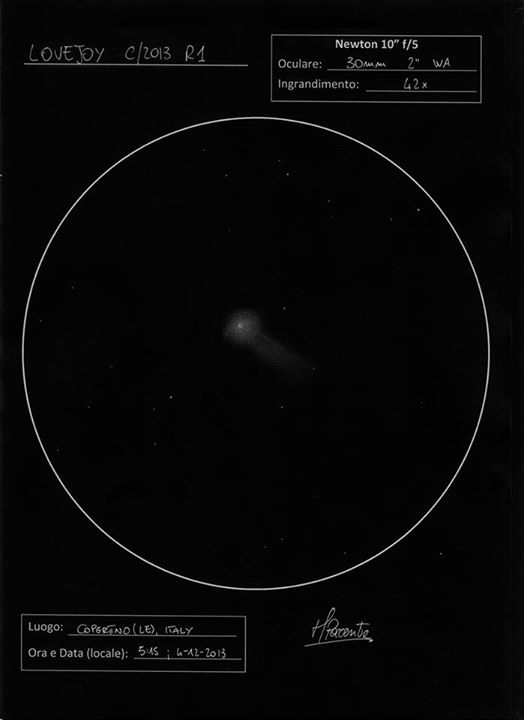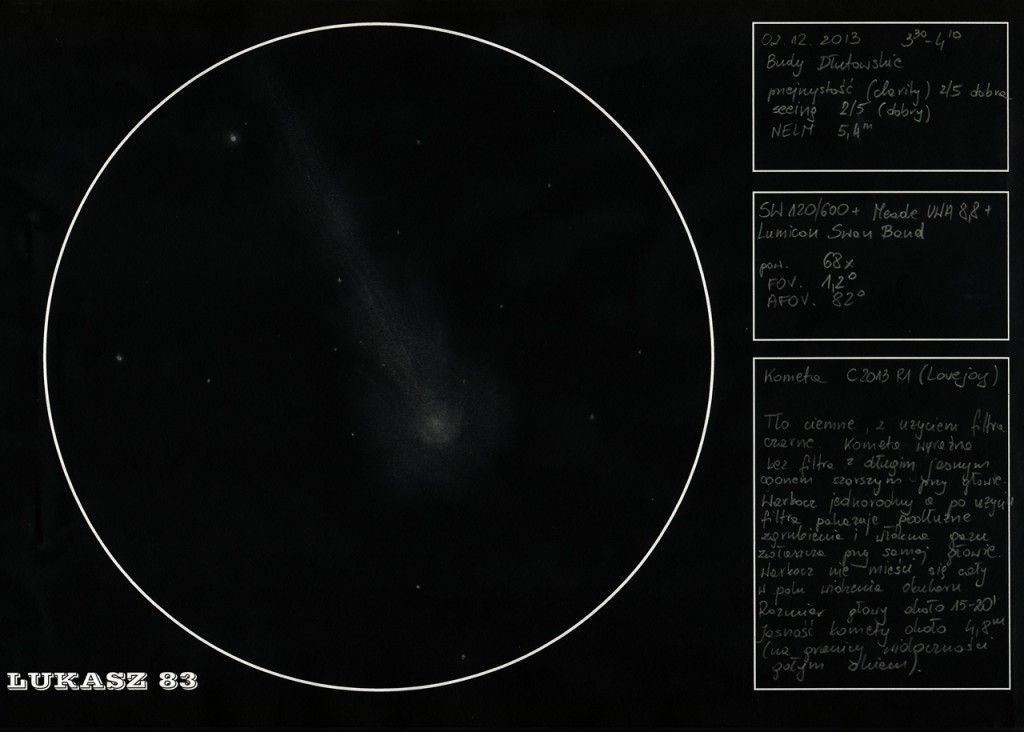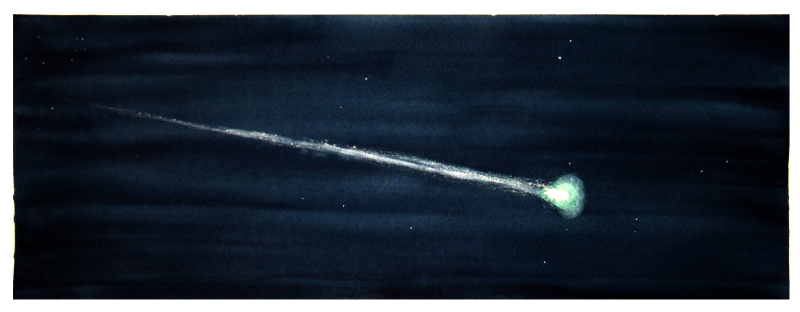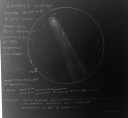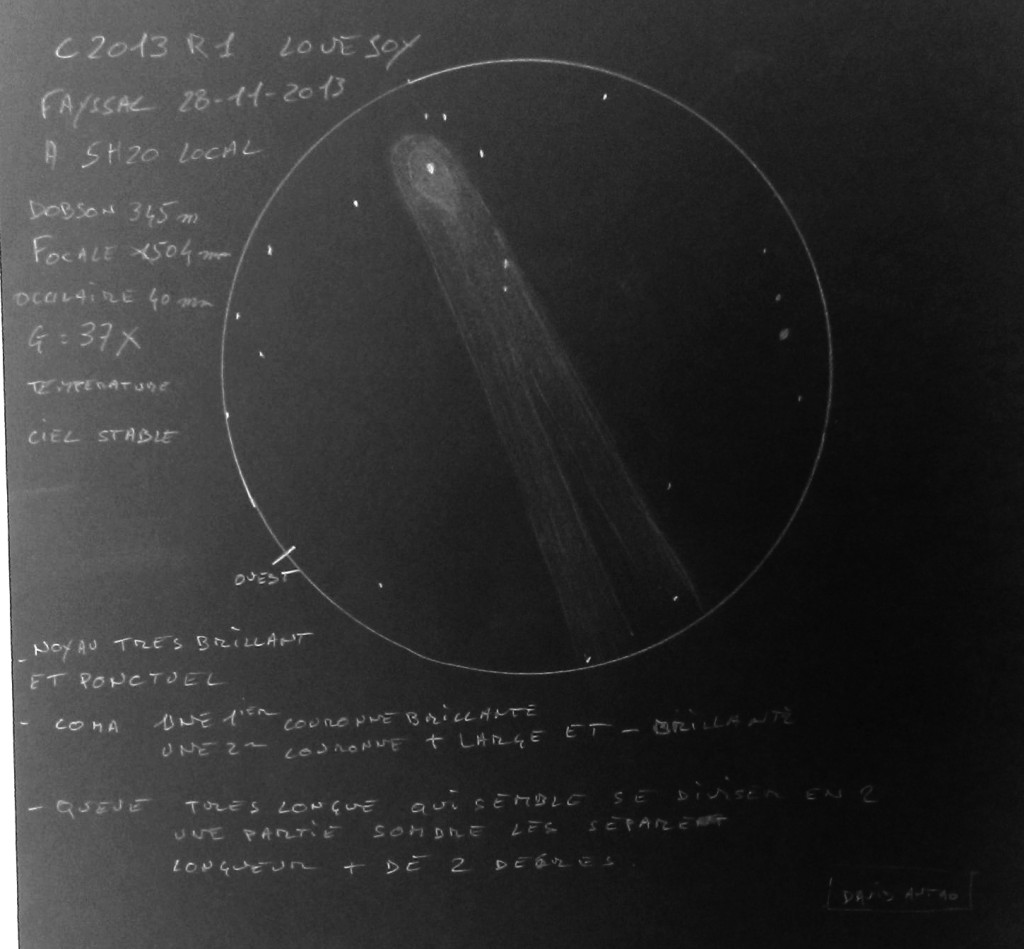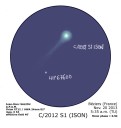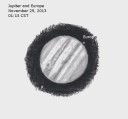
2012 01 07 – Mars
PCW Memorial Observatory, OH – Erika Rix
www.pcwobservatory.com
16” Zhumell, f/4.5, non-tracking Dobsonian mount
12mm WA Burgess, 2x Barlow, 300x magnification
Filters: Mars, 82A blue, 21 orange
5.6 C, 64% H, S: Pickering 4-5, T: 3/6
CM: 159.8°, Ls: 54°, Phase: 0.92, V. Mag: 0.1
RA: 11h 32m, Dec: 6° 18′ 51″
This was my most recent Mars observation from a few weeks ago. With only one or two clear nights since then, the timing was such that it prevented me from being able to crack open the observatory.
The early morning of the 7th, I had ample time to let the mirrors cool down on the telescope and collimated before dark. It was a little windy but had calmed down by 3am. Still, seeing wasn’t the best. I cold make out the NPC straight away and it appeared tucked in on the western and eastern edges more so than my observation the week prior. There was a definite dark streak above the NPC in my view and a few more darkened patches scattered around the disk. Very slight limb brightening on both the preceding (just prior to the terminator toward either pole) and following limbs.
I had to nudge the scope time and time again to let Mars slowly drift through my FOV before slight variances in albedo became apparent. It was nearly impossible for me to match them up with labeling programs such as Mars Previewer II or my Mars Globe app on my iPad because the two views on those programs were a little off from each other even though I checked the date, time and location several times. In the end, I went with Mars Previewer II since I’ve been using that program the longest.
I’m very much looking forward to more opportunities with Mars as it reaches opposition. If only my primary mirror was clean…sigh.
The sketch was created using charcoal on card stock, charcoal pencils, willow charcoal, vinyl eraser pencil and kneaded rubber eraser.
